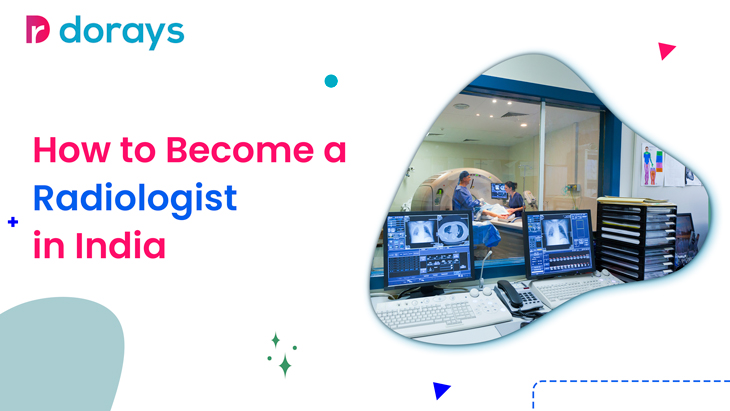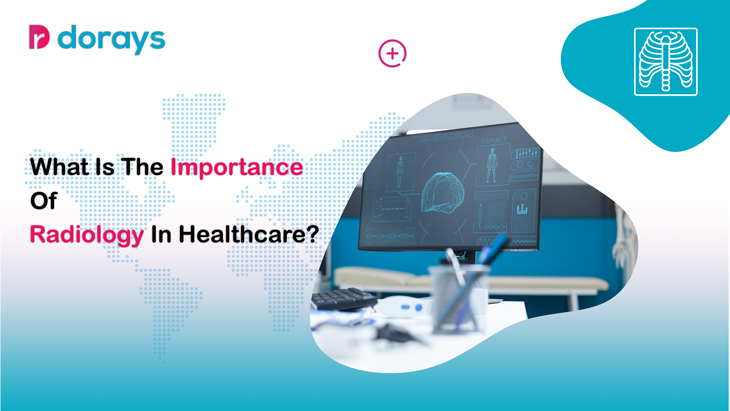Radiologist in India: Have you ever seen your parents having nostalgia for black and white photos? If you also like black and white photography and your immense passion for medicine, Boom!! You are on the perfect article which suits you, and radiology is your chimera coming true. So basically, radiology is the branch of medicine that makes you the photographer of all the anatomical structures of your body.
Coming to the work description of a radiologist, a radiologist is a doctor who uses the techniques like X-rays, computer-assisted tomography (CAT scan), positron emitting tomography (PET scan), Ultrasound, MRI scan, etc. to detect abnormalities in the anatomical structures of the body and the reason behind the underlying disease conditions.
They operate sophisticated machines like X-ray, MRI, and ultrasound and work with radiation of waves of different wavelengths. They work with other physicians to treat patients with the assistance of medical radiographers and imaging technologists. Sometimes they need to work with surgeons inside operation theatres (OT) during complicated surgeries to make the path smooth for the surgeons. They suggest possible treatment options to the surgeons and other physicians based on their diagnostic tests. If you would like to focus on radiation oncology, it deals with the treatment of cancer using radiation therapy treatment. It seems like the work of a superhero, isn’t it? So now let’s explore what it requires to become the most preferred specialty of medicine with a decent payment as well, Radiology.
Eligibility criteria and admission process for becoming a Radiologist: Here, the journey begins
The journey of a radiologist starts from the school curriculum itself. For your knowledge,l would like to state that it will take around 9-10 years of dedication and hard work to be recognized as a radiologist. You have to be a student having a good academic career in 10th and 12th class, with the combination of subjects, physics, chemistry, biology, and English as a compulsory subject scoring more than 50% in 12th to become eligible for writing the NEET-UG exam which is the pioneering step in becoming a radiologist. During the NEET-UG preparation, you need to be a consistent, dedicated, and smart-working student to taste the delicious fruit of success in entrance examinations.
- Then it comes to the turn of MBBS, another crucial step in the journey. MBBS is the most desirable undergraduate degree in India, which is also famous for being the lengthiest degree course comprising 4½ years of academic years (9 semesters), followed by a compulsory internship of 1 year in a hospital.
- Then it is time for the real battle, the NEET-PG examination; after qualifying for this exam, you will be able to get admission to a medical College in MD radiology course. MD radiology is a postgraduate program in Radiology that is usually preferred by the toppers of the NEET-PG examination, which takes three years to be completed. After completion of MD radiology, doctors nowadays usually go for subspecialties of radiology for a better grasp over this arena.
Some other radiology courses are DNB radiology, a three-year post-graduation degree that some medical Colleges may not provide.
The other option is a Diploma in medical radiodiagnosis, a two years course for students who don’t want to take a long time.
Subspecialties of Radiology, on a snapshot
Some of the most practiced subspecialties of Radiology are –
- Diagnostic radiology (The most desirable branch)
- Radiation oncology
- Cardiovascular radiology
- Gastrointestinal radiology
- Breast imaging radiology
- Interventional radiology
- Neuro-radiology
- Musculoskeletal radiology
- Pediatric radiology
You can pick any of the subspecialties depending on your interest, skills, work environment, and schedule.
Other associated courses related to Radiology
As you all know, becoming a doctor is anything but the toughest task in India, don’t feel discouraged at all. If you have an inevitable passion for the healthcare profession, no one can stop you from achieving your goals. Here are some of the courses which don’t require a medical degree to enable you to work in the field of radiology with prestige as well as a decent salary.
- B.Sc. in Medical Radiography and imaging techniques (A 3-year bachelor’s degree program)
- Diploma in Radiology therapy (A 2-year diploma course)
- M.Sc. in Medical Radio-imaging (A 2-year post-graduation program)
Conclusion
Dealing with huge machines which are used to detect anatomical abnormalities inside the human body and find out the reason behind the disease conditions by taking photographs of internal structures of the human body with the help of sound waves, radiations, magnetic fields, positron particles, and many more. This sounds so exciting!So let’s fulfill your dream with the most desirable degree for MBBS students, Radiology.





Leave a Comment